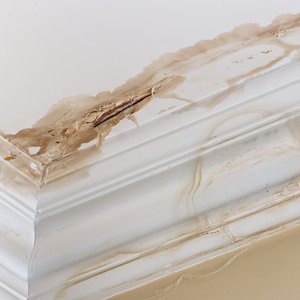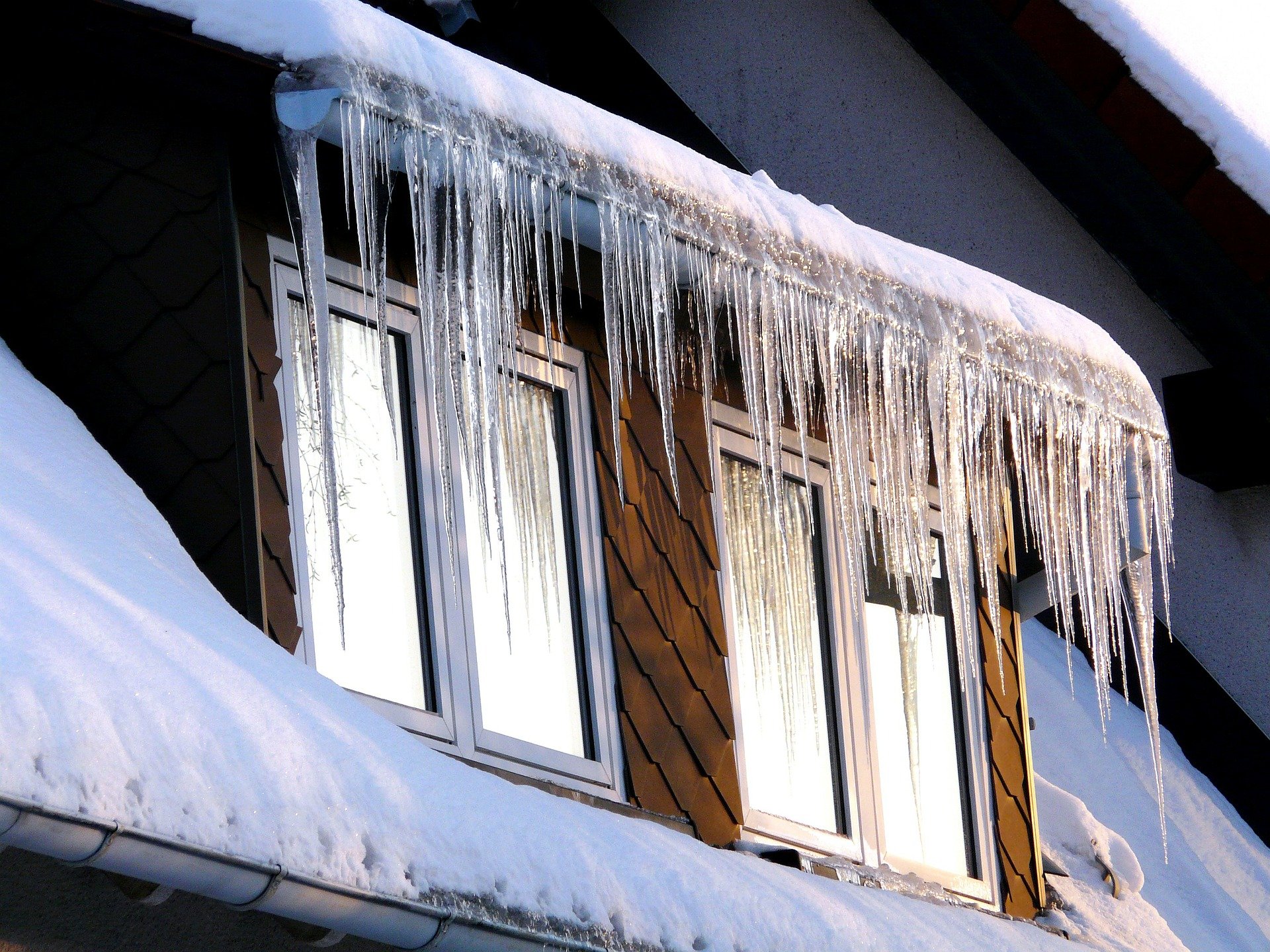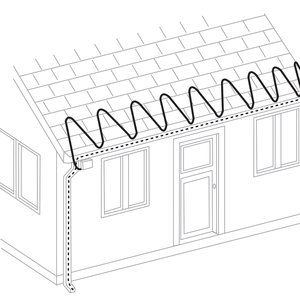How do you know if your home has an ice dam? If you have a number of large icicles hanging from the eaves of your home, you're probably in the presence of an ice dam. In fact, if the icicles hanging from your home are 2-3 inches or greater in diameter, it's a sure sign that ice dams are forming, according to a Boston Globe article written by general contractor, carpenter and Editor of AConcordCarpenter.com Rob Robillard.
Although these icicles are often pretty to look at, you could be looking at significant damage to your home if the ice damming isn't taken care of. According to an article in This Old House Magazine, dams have the ability to "tear off gutters, loosen shingles, and cause water to back up and pour into your house." In turn, this results in "peeling paint, warped floors, stained and sagging ceilings, [and] soggy insulation in the attic, which loses R-value and becomes a magnet for mold and mildew."
These outcomes are enough to scare any homeowner living in a cold climate. And considering the recent weather conditions across the Midwest and Northeast, ice damming could be an issue for thousands if not millions of residences this year.
How are ice dams formed?
"Ice dams form as a result of warm air inside your home leaking into the attic and warming the underside of the roof, causing snow and ice to melt," writes Robillard in the Boston Globe article. "The melted water will drain along the roof, under the snow, until it reaches the cold overhang. The overhang tends to be at the same  temperature (below 32 degrees) as the outdoors, and the melted water will refreeze and form icicles and possibly an ice dam."
temperature (below 32 degrees) as the outdoors, and the melted water will refreeze and form icicles and possibly an ice dam."
As more and more melted water hits the ice dam, it backs up under the roof shingles and escapes through cracks and openings in the roofing, thereby leaking into your home, he explains.
Ice dam issues typically occur after heavy snowfall and several days of freezing temperatures, Robillard notes.
How to avoid ice dams
The best way to fix an ice dam is to prevent it from ever forming in the first place. Unfortunately, you can't go back in time and put preventative solutions in place. If you already have an ice dam, This Old House Magazine suggests aiming a box fan blowing cold air at the underside of the roof where water is leaking in to freeze the water. Then, Robillard suggests harnessing steam with a hose and wand in order to cut the ice apart from the outside and remove it from the roof.
However, if you have a chance to shield your home against ice dams before winter hits, one of the best ways in which to do so is by installing a deicing system. WarmlyYours' Roof and Gutter Deicing Cable System provides a reliable solution for ice damming that occurs in gutters, downspouts, overhangs, valleys and bottleneck areas between roof features, such as dormers or adjacent rooflines. These heated cables are applied to the edge of a roof, where they can detect and melt snow and ice, creating a pathway for water to drain properly. With this system in place, you'll never have to worry about winter weather wreaking havoc on your home.
For more tips, be sure to read the full Boston Globe article here, or visit warmlyyours.com for more information on our roof and gutter deicing solutions.
Sources:






Hi We installed roof deicers this summer as we had serious ice damming last winter which caused us to lose our kitchen and half the main bathroom. We are still renovating from all of that, Question.... We are now into winter again, put in the gutter and roof deicers but we are still getting icicles, why would this be? We have reinstated the ceiling put new roof vents in to help solve the ice damming issues......but are still quite concerned, Can you please give us some suggestions or reasons why the icicles are still forming along the gutters. Thanks Carolyn
Posted on behalf of Scott Rosenbaum, Manager, Technical Support & Engineering, WarmlyYours Radiant Inc: Thank you for your question, Carolyn. After learning that you purchased your product elsewhere (that is, not a WarmlyYours system), my recommendation is that you contact the installer of your system to see if the product was installed correctly and if the heating cable and controller (if present) are functioning as designed. Since this is not our product, we will be glad to help any way we can, but your installer would be your point person to investigate the issue.